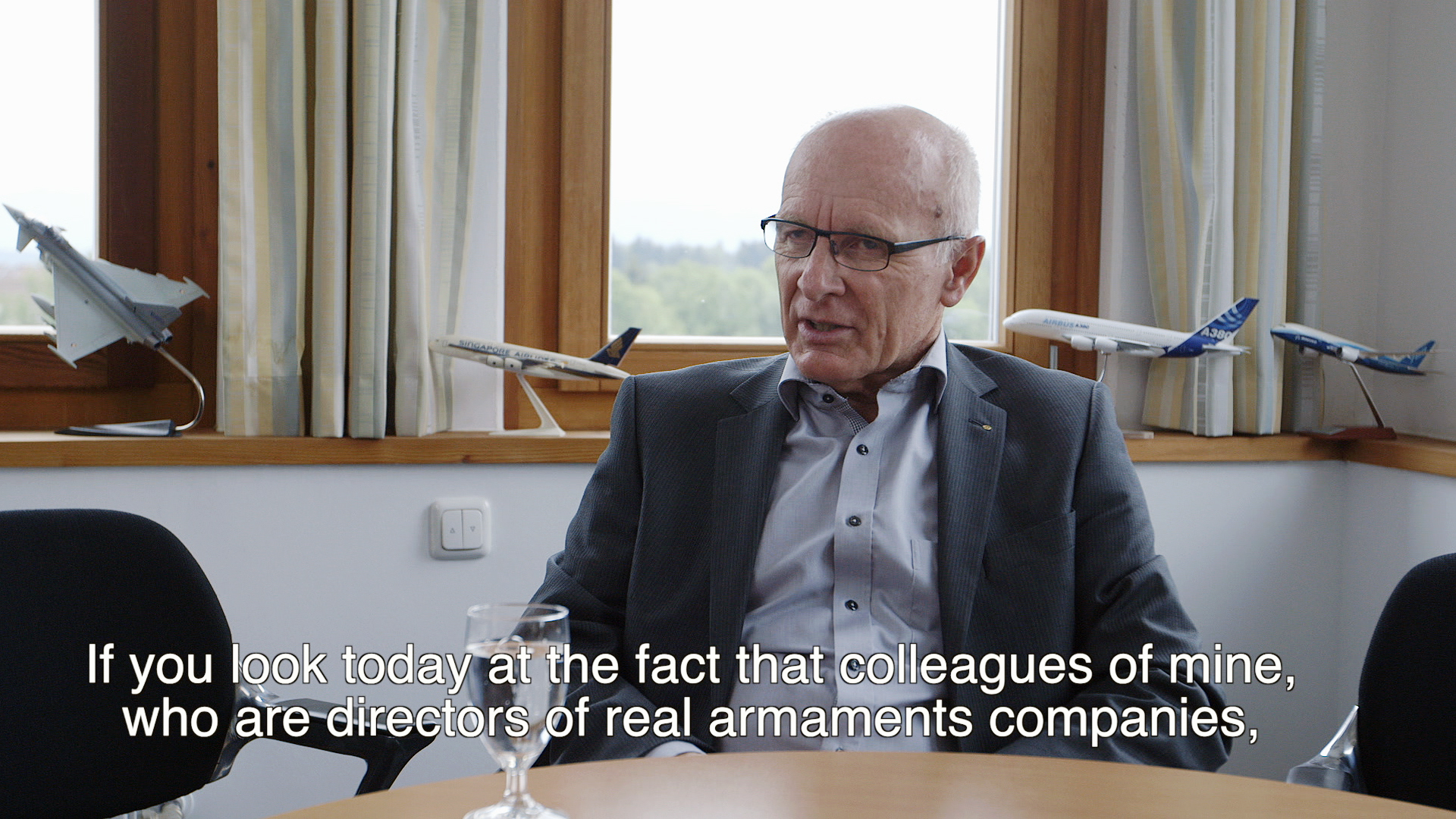Franz Wanner
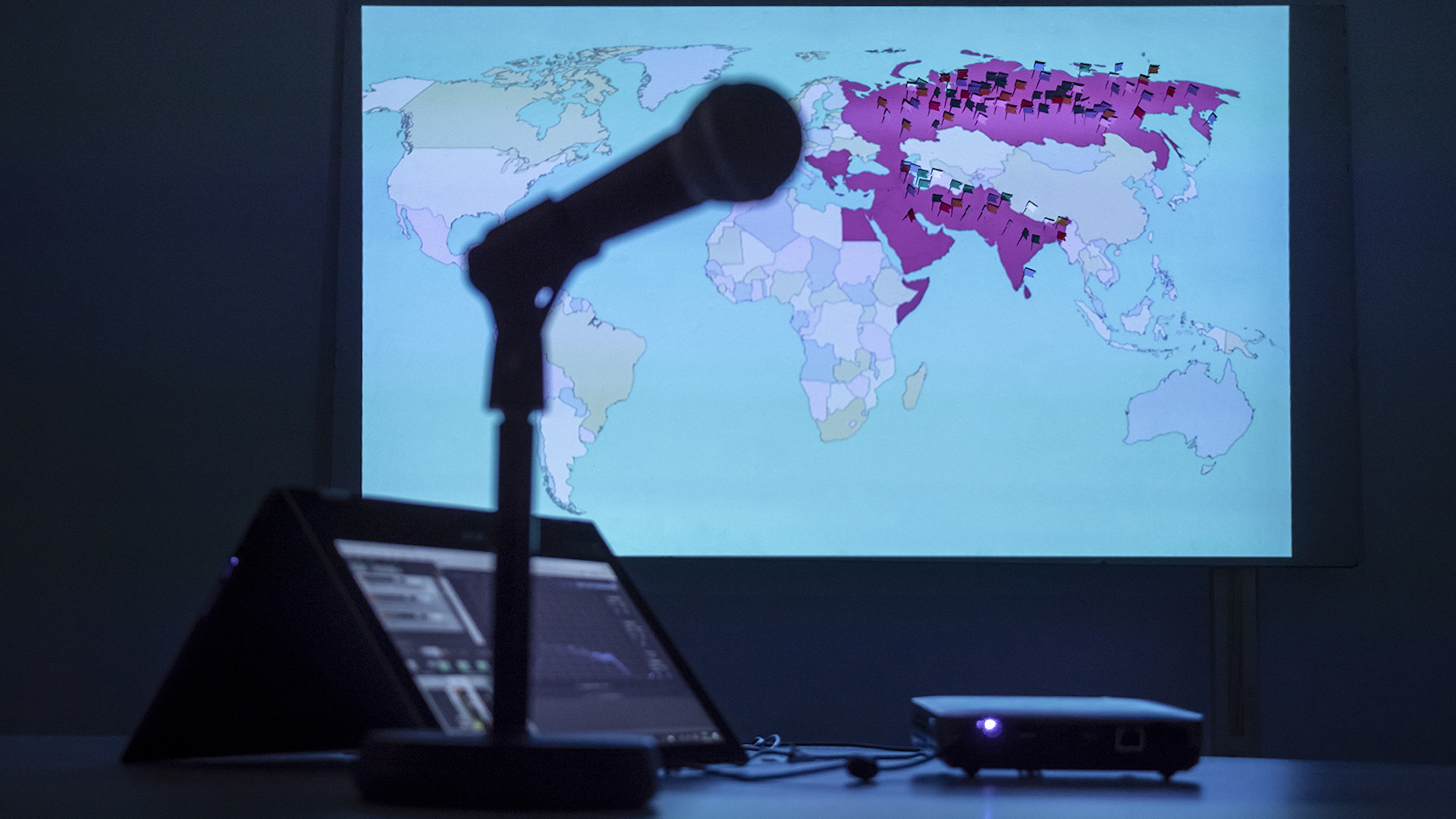
An empty old bookshop, a touristy cathedral and boring glass and concrete buildings, this is what your stroll through Munich’s city center might show you. A pretend bookstore, a church belfry dissimulating a radio antenna, phony names on mailboxes and doorbells of government-owned buildings… Visiting Munich with Franz Wanner’s Secret Guide in lieu of a regular city map might lead you to the same places, most of them seemingly unspectacular, but will load them with history. From the use of front companies to linguistic obfuscation, from extra-legal practices to on-site infiltration, the German secret service’s tactics find themselves exposed through the mapping of the Federal Intelligence Service’s office space.
Within the context of the announcement of the new Bavarian law—finally passed last May—, increasing police powers of surveillance (allowing among other things the reading of physical and electronic communications and expanding the investigative uses of DNA data at a ‘preventive’ level), the disclosure of the information that the Munich cathedral was housing a radio station used by the Federal Intelligence Service (the BND) by Franz Wanner, last February, led to a press conference from the BND, to instructions given to its agents, and to a demand from the Catholic Council of the Munich region to dismantle the apparatus. We met the Munich-based artist to discuss the contemporary availability and spreading of information in our democratic societies and what happens when art starts to interact with the non-art world, on the occasion of The Interrogation (2018), a performance he staged in Munich, to address the interrogations of refugees covertly conducted in the city by the German intelligence agency.
What’s the story behind the Secret Guide? This project stems from an interest I had in the term “state secret” that I encountered before in my work. This term describes the last democratic node of a network, that disappears in a murky zone in which further questions are not allowed and answers are refused—the end of transparency, the end of democracy, in the middle of present-day Europe. So, getting to this point over and over again for the last five years was an impulse for focusing on the structures making it possible. What were those previous works that connected you to that “state secret” topic? Works on topics like the arms industry, and around the term “dual use”; dual use meaning technology and products that can be used both for civilian and military purposes but that are mainly used in a military way, the label dual use thus being used to hide the military aspects. I delved into this specific issue after I met the CEO of this high-end aerospace technology company that produces parts for the Eurofighter and for some other fighter planes, in my native town. During a TV interview, I had called his company an arms company, so he contacted me and, very angrily, told me I was putting him at risk by doing so, exposing his premises and employees to potential attackers, and that this was the reason why these businesses weren’t labelled as arms companies, but dual use companies. You use a different wording and suddenly everything is fine.

Franz Wanner, Dual Use II, Environmentally Friendly Explosives, 2016. Video still. Courtesy Franz Wanner.
So how did you explore this theme? Dual-Use (2016) is an installation consisting of four videos that present some people involved in this “dual use scene”, such as a US Army drone pilot who now lives in Germany and also works as a model. As you know, many drone attacks by the US military are coordinated from Germany. With this piece, I try to connect the local work of these persons to its global influence, somewhat in the line of Harun Farocki’s Inextinguishable Fire (1969), in which he showed how a vacuum cleaner can become a functional weapon and a machine gun can become a useful household object. The basis of the videos was interviews that you conducted? Two of the videos consist of found footage, the other two were filmed by myself. But how did you persuade these people to be filmed in this framework? This was a hard process! The CEO first invited me but it turned out it was only to get angry again, I was almost thrown out of there. I had a film team with me but he forbade us to film anything. I finally convinced him when I mentioned that I had heard he was the global market leader in his product range—I would never have expected this to work, but he started talking and we filmed about three hours there. Approaching some of the universities that are cooperating with the military-industrial complex was easier because I also teach in a university. So, on the pretext that we were using drones at our faculty and that I was conducting a research programme in the domain of the use of algorithms for interpreting the images captured by drones, I was able to interview professors and researchers there.
And then, your installation Dual-Use triggered a parliamentary request about the funding of a Munich campus that houses, in addition to state technical and sciences universities, the German Armed Forces University and dual use businesses such as Airbus and Siemens. What’s your position with regard to your work interacting with the situations it describes? The interferences with certain realities and the direct effects on them such as the ones caused by Dual-Use and The Interrogation are side effects of my artistic work, not its substance. Such effects don’t say anything about the quality of an artwork. But, of course, I used the reactions of the government, the reactions of the secret services and the reactions of the Church, and the answers they had to give or the way they managed to avoid giving answers as new material for my artistic practice. The video installations From Camp to Campus and Battle Management Drawings (both from 2017), for example, [shown last year at the Munich Lenbachhaus in the exhibition “After the Fact. Propaganda in the 21st century”] are related to the government answer to the parliamentary request that resulted from the installation Dual-Use. You can do research and find out a lot but, at some point, when the state itself is questioned, you’ll get the answer that it is in your own interest not to know. Something like “We’ll make sure this is the best for all of us”–all of us being, in this context, all Germans or all the people who relate to our ideology, which is how I would call this. But I think there is no need to believe in national myths. That’s why I concentrated on this point where answers are not given and transparency is avoided.
Which led you to explore what you call the Munich “secret sites”… Yes. Here we have that strange situation where the intelligence agency (BND) of the Federal Republic of Germany is older than the Republic itself. Its operating system is really spread out as, in addition to its central offices in Munich and Berlin, the BND has used around 200 secret offices worldwide. I listed 125 of them in Munich, former ones but also offices that are currently operating; I commissioned a specialist in intelligence agencies to help me map them. When I started this research, I found out that one of those places was actually a collection of five of them located in the same building and that I actually live pretty close to it, which means I’ve been passing it every day for years unknowingly! Then I found a CIA document that is available on the Internet—it’s public—that tells a lot about older secret sites that are not in use anymore. One is just opposite the hotel where you stay in Munich these days, on Türkenstraße. So this document was public but these sites were largely ignored by the public, until you published your map of them, last July… This research actually started to gain attention a bit earlier, in February, when I went public with the fact that the Frauenkirche—the cathedral, the major Munich landmark—was used as a secret service radio tower. I disclosed this information during a radio interview that offered me half an hour for putting it into context; it took two or three weeks for the more mainstream media to take it up: Der Spiegel published the info and then it spread all over in the press, completely de-contextualized. It became a headline. Much more interesting to me than this church turning out to be a “secret service landmark” was my discovery of a specific site dedicated to the interrogation of refugees. In this context, certain terms are playing a very important role, they are sort of producing a reality that seems very normal in the end: refugees come to Europe in the hope of getting shelter and then they are invited to interrogations by the secret services. Invited? Invited is not the right term, you’re right. They get no chance not to take part but, from the perspective of the secret services, it’s necessary that they are presented doing this voluntarily. And they don’t know that they are cooperating with the secret services, it should appear as a normal step in the asylum process.
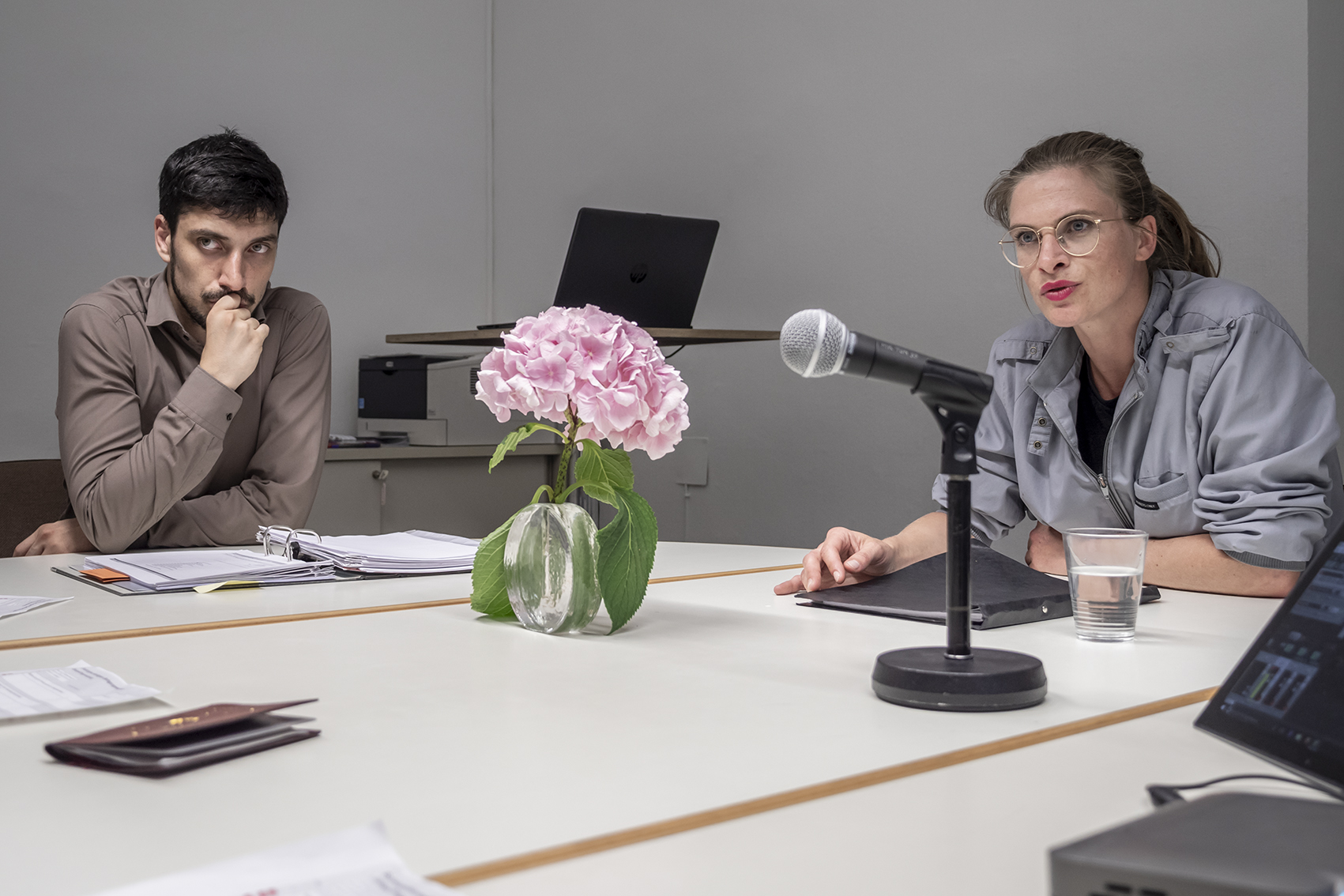
Franz Wanner, The Interrogation. Multimedia work, situational loop, 18-22.07. 2018, Public Art Munich. Photo : Franz Wanner.
How are they contacted? Are they picked up in camps or…? No, the Federal Office for Migration and Refugees, where they have to register, collects their personal data and passes it on to the BND which filters their nationalities to decide on who will be sent to interrogation. The office for migration and the secret services cooperate really closely. But for this process to work properly, it’s important that the asylum seekers feel invited. Then, they are often offered support for their asylum application in exchange for information. Does it work? I mean, if people cooperate, are they really granted papers? Not in every case, but quite often. Do you have proof for that? Yes. They are also given money, like 200 or 300 €, for more information. Sometimes, they’re actually hired. In what form? When the interrogator gets the feeling that the asylum seekers are in contact with persons that might know more than them, they ask them to travel back to meet those people and get the desired information. How did you get all this information, yourself? I get a lot of information through public documents. It’s not that difficult and you don’t need to rely on whistleblowers or leaks very often. Much of the information is available if you dig deeper in official documents. I think it’s important to mention that it’s not necessary to break in somewhere or to access leaked data: there is a huge accessibility for contemporary information in general, much more than you would think at first. I’m often asked if I’m doing investigative research and, mostly, I’m not. I’m just reading documents and having a very close look at what they say and at whose interests are at stake with regard to the information mentioned, and I carry on from there. So this is important to know because I think a lot more people could use this method to create public pressure. But you also meet people to get testimony… Yes, I talk to a lot of people. It’s necessary, it’s a totally different quality of information. Do you tell them what you’re doing? Most of the time. But for Dual Use, I didn’t introduce myself as an artist, otherwise my “protagonists” wouldn’t have been interested in talking to me. Like the CEO of the dual use company. So, for The Interrogation, you met refugees who went through this interrogation process? I talked to refugees who went through interrogations and to lawyers who work with refugees. And from that, you wrote this text, which serves as a script for the performance… I was very interested in this situation where, in one hidden room somewhere—not in an official BND building but possibly anywhere, behind any window in the city—three people are sitting, one refugee and two secret service agents, and these latter are trying to get information that would be used for making the state more secure, as they say. And refugees are there because they want to get away from non-democratic structures and then they find themselves in a situation that is totally removed from any democratic structure: it’s information against nationality or information against the right to stay. I thought of this as a microscope sample slide where you can observe such terms as state secrets and state interests, nationality, citizenship and privacy very closely. This was my interest in producing a reenactment of this situation. The staging actually does not reenact an actual interrogation; it simulates an exercise in a BND instructional context, and participants are addressed and involved as agent trainees. The leader directs them to rehearse rhetorical methods targeting a domestic state of emergency and the extralegal zones where the secret services can be seen as an institutionalized form, to be rendered normal and necessary. Is the whole performance based on real information or is there any speculative part? The interrogated people have their voices analyzed by a software that determines where they come from. This voice analysis is still being tested, so it’s not used as a standard yet, this is a hint of something in the offing, but the other elements are based on research into current methods. Such as the list of “interesting” countries? Yes, this one was mentioned in several of my sources. Also the fact that people under 18 are interrogated too and that agents from other countries also take part in interrogations, such as French, British and, of course, American agents. But why the French and the English? The allies from World War II. Really? Yes, it’s still important for the Federal Republic of Germany: the CIA founded the German secret services in 1946. I remember you telling me that it’s not “legal” to have members from other countries attending such interrogations. Legal is not the right term, because they don’t have to relate to what is legal. But an intelligence service is supposed to follow national interests, so the question is: how can American agents follow German interests since they are supposed to always follow American interests first? From 2014 to 2017, an investigative committee examined the NSA connection to the German secret services (to know whether the BND gathers personal information about German citizens and passes it on to the US) and an 1800-page pdf report was published. I took a lot of information from it. So you said interrogations can happen anywhere because they don’t use the BND premises for that? There was a place that had been set up for refugee interrogations in Munich, but it was closed in 2007. There was also an important place in Berlin that closed in 2015 as part of the “transparency offensive”, as they called it. The BND had an image problem at that time, partly because of their connection to a neo-nazi scene, and for other reasons as well, such as the fact that they interrogated teenagers. So they closed the BND’s Hauptstelle für Befragungswesen—they use a lot of terms that are linguistic monsters, like Bundesvermögensverwaltung Abteilung Sondervermögen (Federal Property Management Division, Special Assets). Even if this sounds very German, nobody here would understand what it means. It’s cryptic. It’s a form of disguise. People think it’s official and bureaucratic then lose interest very fast. The intelligence agency’s practice of “siphoning” refugees was thus declared over in 2015 under public pressure and the “Main Office of Interrogation” charged with it was closed. Since then, the interrogations have been carried on in other locations. Is your choice of placing the audience in a participatory but passive position a straightforward reaction to the passive participation we citizens mainly adopt? This is one way of reading it. The situation, which appears to be an exercise in reenactment, brings to the fore, at the same time, the negotiability of documentary truth-content and potentially new constellations of a fragmented reality. After learning about interrogation practices, the participants receive the material to prepare for their next week’s session: the Secret Guide, which is this map of 125 of these Munich secret sites, a huge number of which come from earlier decades, but there are also contemporary ones that were not public yet. So you have the detailed list of these places, their pseudonyms—they’re all bogus companies—and what they are or were used for in reality, as well as their period of activity when this info was available. It’s a bit like shell companies for tax evasion… Yes, but within the state system. And there are two ways for companies to be involved.
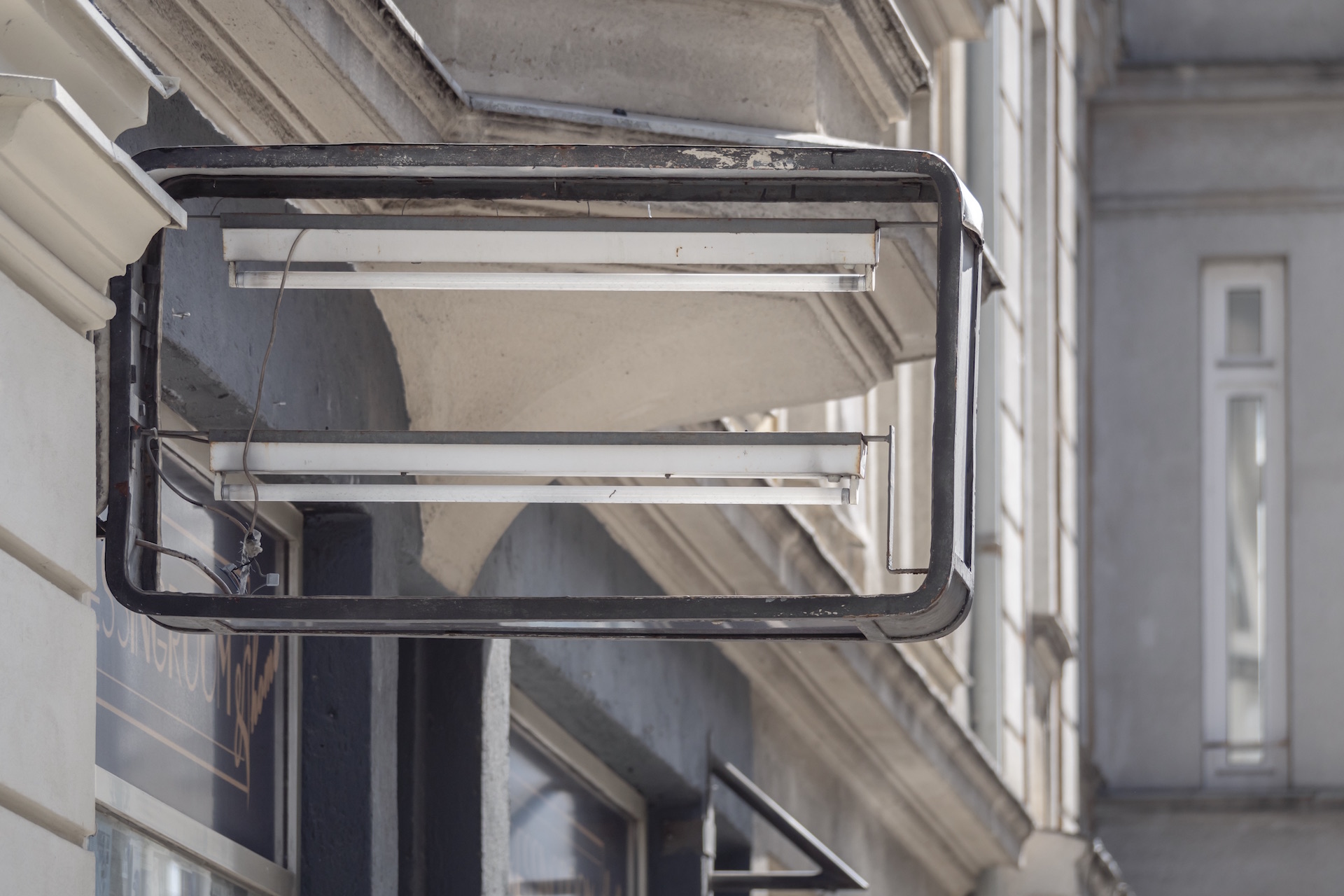
Franz Wanner, Secret Sites, Akademie-Buchhandlung, 2018.
Türkenstrasse 58 | 1950s. The Academy Bookstore did not sell books. It was a bogus company of the German Intelligence Service (Org). The company’s close physical proximity to the art academy, and the art academy’s remoteness at the time from theory, ensured that the code name “Akademie Buchhandlung” was difficult to crack. Photography. Courtesy Franz Wanner.
So real companies can be involved? Yes, those wittingly take secret agents among their employees and benefit from it with money and also help from the secret services to export their production. Others are just pretend. The one facing your hotel, called “Akademie-Buchhandlung”, was supposed to be a bookstore but it was a BND office in reality. The sign said: mail order only, you could not enter the shop. Long before the Internet, there was this system of shipping bookshops from which you could order books, so nobody would ever find out that not a single book was ever sent and that the bookshop was just a facade. It was absolutely plausible because it was close to the university but, as it was the art academy, which was very far removed from theory at that time, no one around would really look for books, (laughs). But many big companies collaborate with the BND. So did the Gloria Palast, one of Munich’s most prestigious movie theatres, after the war. At the time, there was a fear of communist activities in small German towns, and the BND wanted information about those activities and their potential danger. As this cinema owned theatres in other German towns, its employees had reasons to travel to these towns to deliver films, etc., so the BND used this company as a front company, disguising their own employees as cinema employees while the cinema received money for this. Have things changed since the fifties? The impact of mass surveillance, with the enormous accessibility of personal data on the Internet, is obviously quite different from former decades. The way reality is produced has also changed a lot, I think. You might remember that Iraqi asylum seeker who said during his interrogation that there were weapons of mass destruction in Iraq… This happened during one of those interrogations conducted by the German secret services. The BND passed the information along to the US who used it in 2003 as grounds for attacking Iraq. This is what I mean by the production of reality. The information was false but it was relevant for the secret services. The asylum seeker was given the codename Curveball and was hired at the ad agency Thiele und Friedrichs Marketing GbR, a front company of the BND in Munich. This is also a sort of dual use… Yes, you’re right, you can call it that.
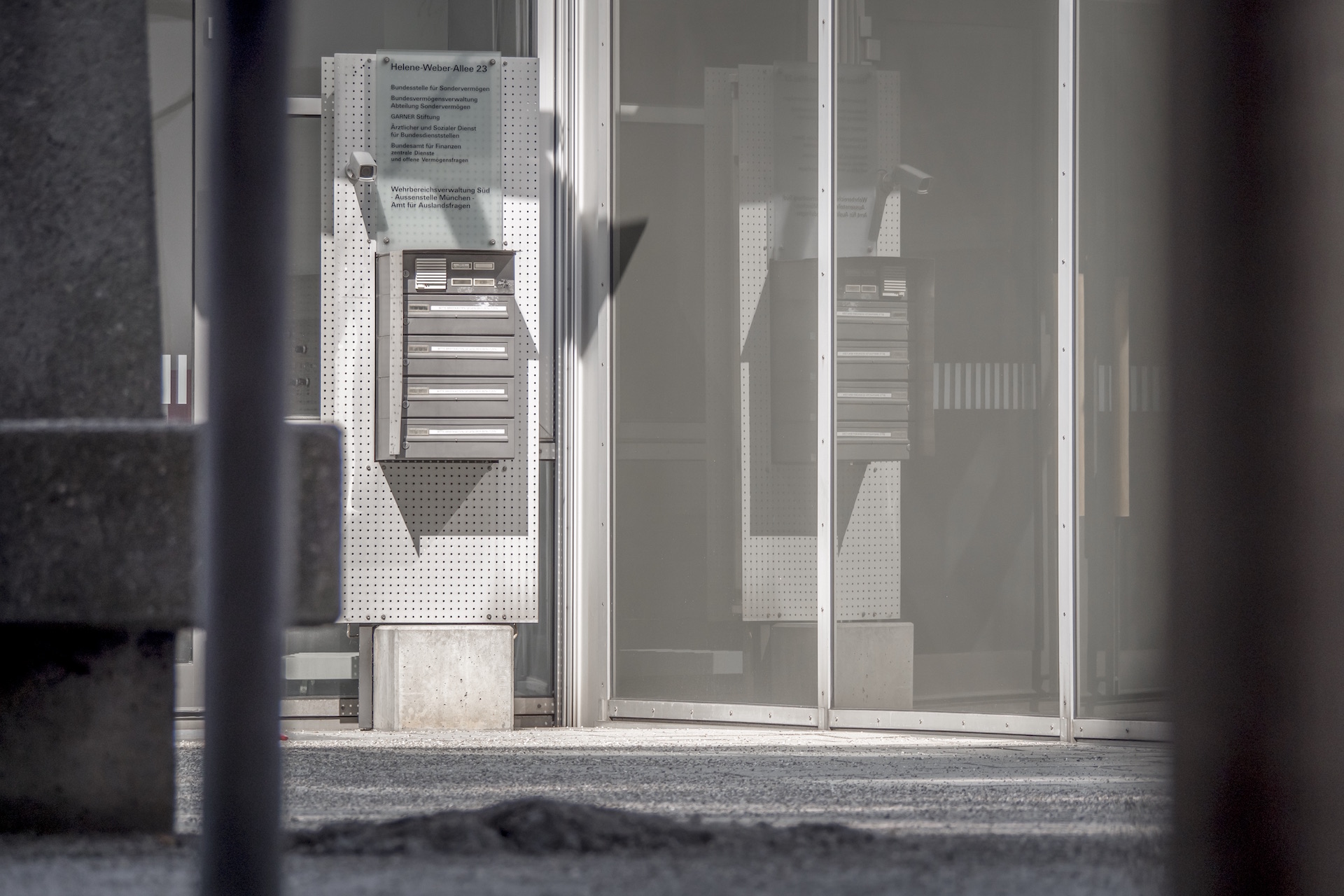
Franz Wanner, Secret Sites, German Weather I, 2018.
Helene-Weber-Allee 23 | ca. 2008 to the present (2018).
Behind the reflective façades are several offices of the BND. The “Federal Property Management Division, Special Assets” is one of the main covers of BND employees, which they also report as their employer to the tax office. The “Garner Foundation” finances recruited students and assists apprehended BND employees. The “Medical and Social Service for Federal Agencies” treats incapacitated agents. The “Military District Administration South – Branch Office Munich” is presumably a main office of the Military Counterintelligence Service. The “Office for Foreign Issues” is a BND office whose directorate was connected around the year 2000 to language recognition projects (SENSUS software for Europol). Photography. Courtesy Franz Wanner.
The Interrogation, Public Art Munich & Münchner Kammerspiele, X Shared Spaces: Route III, 19-22.07.2018
18 +/- , Voluntary Self-Control, Moscow Museum, 23.08—23.09.2018
- From the issue: 87
- Share: ,
- By the same author: Paolo Cirio, Sylvain Darrifourcq, Computer Grrrls, Jonas Lund, Heather Dewey-Hagborg,
Related articles
Céline Poulin
by Andréanne Béguin
Émilie Brout & Maxime Marion
by Ingrid Luquet-Gad
Interview with Warren Neidich
by Yves Citton


